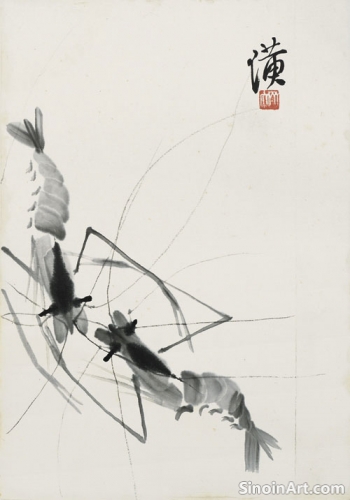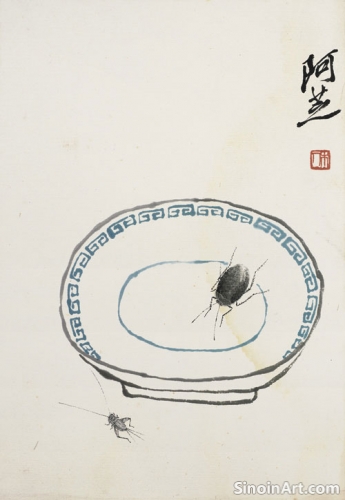The Influence of the "Four Gentlemen" on Xieyi Subjects
|
The "Four Gentlemen," or sìjūnzǐ (四君子) – plum blossom, orchid, bamboo, and chrysanthemum – are highly revered subjects in Chinese art, particularly in Xieyi, each embodying distinct virtues and characteristics that resonate with the ideals of the literati artist. They represent a range of noble virtues, making them ideal symbolic subjects.  The plum blossom, which blooms in the depths of winter, symbolizes resilience, perseverance, and the ability to overcome adversity. It is associated with courage and hope. It is a reminder of the ability to bloom in even the most difficult of circumstances.  The orchid, with its delicate beauty and fragrance, represents refinement, elegance, and humility. It is associated with grace and inner peace. It reflects a certain quiet beauty and calm spirit.  The bamboo, with its upright form and flexibility, symbolizes integrity, strength, and adaptability. It represents qualities of moral character that are often sought after in the literati ideal. Its strength and flexibility make it a powerful symbol. The chrysanthemum, which blooms in late autumn, represents longevity, resilience, and a life of quiet contemplation. It is often associated with retirement and a peaceful life. It represents the ability to remain beautiful, even in old age. These four subjects, each with their own unique qualities and symbolic meanings, provide a rich source of inspiration for Xieyi artists, allowing them to express a range of emotions and philosophical ideas. Their symbolic nature makes them ideal vehicles for expressing deeper meaning. The careful selection of each flower reveals the underlying intent of the artist. |
Tag : Four Gentlemen, Chinese symbols, plum blossom, orchid, bamboo, chrysanthemum
Related information
- The Use of "Side Brush" in Xieyi
- Learning Xieyi Painting: A Path of Practice
- Xieyi vs. Gongbi: Two Paths of Chinese Painting
- The Concept of "Yi" in Xieyi Aesthetics
- The Significance of Brushwork in Xieyi Painting
The "Side Brush" (cèfēng) technique in Xieyi involves holding the brush at an angle to create strokes with distinct texture and varying width, allowing for greater expressiveness, dynamism, and effective depiction of textured surfaces and movement, a crucial skill for any Xieyi painter.
Learning Xieyi painting involves mastering basic brushstrokes, observation of nature, studying old masters, developing a personal style, and cultivating patience and persistence. It is a process that blends technical skill with personal growth and understanding.
This article contrasts Xieyi painting with Gongbi painting, highlighting the differences in their techniques, brushwork, use of color, and overall artistic philosophies within the Chinese painting traditions.
"Yi" (untrammeled) is a highly valued aesthetic in Xieyi painting, referring to effortless freedom, spontaneity, a lack of artifice, and a sense of naturalness, achieved by letting go of rigid rules, allowing intuition to guide the brush, and creating artworks that are both expressive and simple.
Brushwork is at the heart of Xieyi painting, serving as the primary means of artistic expression. The brush is not merely a tool; it is an extension of the artist’s hand and emotions. Mastery of the brush is essential to conveying the spirit and essence of a subject.